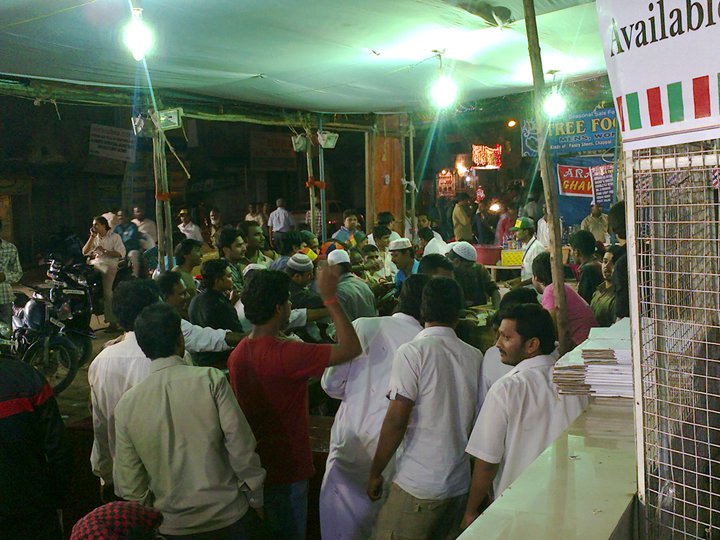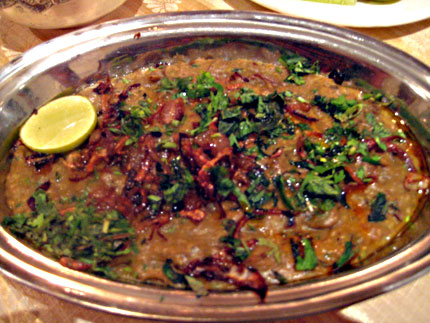Streets, alleyways and dingy lanes decorated with multi-colored serial bulbs, Mohammed Rafi songs blaring from loudspeakers, Megaphones offering alluring p ackages, coaxing one to try the irresistible flavor of the season. Yes, it’s Haleem in the Air.
ackages, coaxing one to try the irresistible flavor of the season. Yes, it’s Haleem in the Air.
Hyderabad, the city of Pearls has come to be synonymous with Haleem. Earning the Geographical Indicator (GI) tag as Hyderabadi Haleem, under the GI Act, 1999, the global recognition was granted by the Registrar of the Geographical Indications Registry.
Haleem is notably the first non-vegetarian dish in India, to be listed under the (GIS) Geographical Indication status .A benchmark any product has to match to qualify, based on originality. Earning a GI status empowers the products to claim ownership while any form of duplication is not entertained. Haleem makers outside Hyderabad cannot stake any claim on the recipe or its ingenuity.
The month of Ramazan transforms every nook and cranny of Hyderabad with makes shift awning counters selling the delectable dish. The demand is attributed to the concoction of goat meat, lentil and pounded wheat cooked to a thick paste. An amalgamation of spices added to perfection, Haleem is sure to tickle one’s taste buds.
The exotic dish is traced back to the Arab diaspora during the Nizam’s rule. Blended with regional traditional spices, Haleem warmed its way into the heart of the native residents during the early 19th-century.
The preparation process is done with utmost dedication, like an art form. Precision and skill are employed to procure the right piquancy. Primarily consumed during Iftar (the evening meal that breaks the day-long fast), Haleem is sinfully rich in calories, deemed to give a quick energy rush.
The standard set for quality is very stringent. Special cooks are hired to give the delicacy a finishing touch. Cooked in pure ghe e, the sautéing and cooking is done over slow fire on firewood. Haleem cannot be cooked on gas or microwave.
e, the sautéing and cooking is done over slow fire on firewood. Haleem cannot be cooked on gas or microwave.
The procedure alone takes up 12 hours in a bhatti or cauldron covered with mud kiln and brick. A special mention has to be made about the Ghotni, a wooden hand masher, used to mash meat and wheat to form into a thick paste. Stirred continuously with wooden ladles, the consistency has to come down to minced meat, but much finer.
The taste has undergone slight variations down the ages. The unique taste is derived from improvising on the original recipe.A sweet variant of haleem is consumed as breakfast at Arab diaspora till date. A chicken variant is not as popular as the mutton haleem.
Hyderabadi Haleem is to be relished in the right ambience, against the backdrop of the Charminar. Seasoned with deep fried onions, cashew and a slice of lemon, Hyderbadi Haleem will become a seasonal ritual once you taste it.



